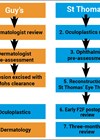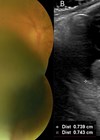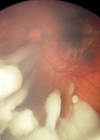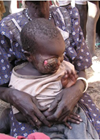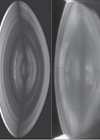Ophthalmology
The founder of modern ophthalmology: Sir William Stewart Duke-Elder
A recent article in Eye News by Blaikie & King highlighted the extraordinary contribution made to the profession of ophthalmology by Sir William Stewart Duke-Elder. The author felt it appropriate to take a further in-depth look at the remarkable career...
Introducing the Royal College of Nursing Ophthalmic Nursing Forum
The Royal College of Nursing (RCN) represents nurses and nursing. While the terms ‘nurses’ and ‘nursing’ are used generically, membership is inclusive of a variety of clinical roles, including midwives, advanced nurse practitioners, advanced clinical practitioners, nurse consultants, registered nursing...
Planes, trams, and auditoriums: Beware predatory conferencing
Predatory open-access journals and predatory conferences are considered the two main areas of predatory infiltration in academic medicine that are of growing concern [1–7]. Unsolicited publishing requests from potentially predatory publishers occur frequently among faculty in ophthalmology [8]. Predatory conferencing...
See sweet to C-suite: Peter Holland
See also - See sweet to C-suite: Imran Rahman In this three-part conversation series, Co-editor David Lockington speaks with highly influential individuals about their journey to the top, with advice for the next generation of leaders. Part One: David speaks...
A novel integrated practice unit (IPU) approach to periocular skin cancer management
The COVID-19 pandemic was one of the biggest challenges to face NHS workers. However, history has repeatedly shown that times of difficulty can result in the development of significant social and technological advances. We describe our own experience of this...
Understanding the inequalities of ophthalmic care for Indigenous people in a first world country
Aboriginal Australians have faced numerous challenges over the past centuries. Here in this article, Edward Saxton highlights why there are inequalities of ophthalmic care in Australia and why this has led to increased levels of blindness in Aboriginal people relative...
Uveal melanoma
Uveal melanoma is the most common primary intraocular tumour. However, they are still rare, with an incidence of 2-8 per million [1]. The presence of a choroidal naevus is a risk factor for uveal melanoma [1]. Patients with choroidal lesions...
Retinoblastoma management update (part 2): treatment, screening and surveillance, long-term follow-up and new developments
Retinoblastoma treatment requires significant multidisciplinary input, but early detection through raising awareness remains key to improving outcomes. In the second article of a two-part series, Manoj Parulekar discusses retinoblastoma management, screening and research. This article has been published in two...
Retinoblastoma management update (part 1): clinical features, diagnosis and genetics
The first of a two part series, this article will discuss the clinical features, diagnosis and genetic aspects of retinoblastoma. Manoj Parulekar is based at Birmingham Children’s Hospital, one of the two designated national retinoblastoma and paediatric ocular oncology treatment...
The refractive index in the eye lens – implications for clinical practice and optical design
The eye may appear to be a comparatively simple organ and yet its optical system is complex and continues to be a source of investigation and research. The major optical elements are considered to be the cornea and the lens...






